Table of contents
Corn semolina is the name given to grainy, gluten-free mill products that are obtained by grinding dried corn kernels ( Zea mays, grain corn, raw?). Wholemeal semolina made from corn is suitable for savoury and sweet dishes and is available in organic quality ( organic).
Corn semolina - Use in the kitchen:
Corn semolina (not corn grits), also called corn grits, has a slightly sweet and nutty aroma. Whole grain corn semolina is available in fine, medium (medium-fine) and coarse grinding levels.
Is corn semolina corn flour? or Are corn flour and corn semolina the same? Strictly speaking, corn flour is even finer than corn semolina, but retailers do not always clearly distinguish between the two terms. You can find out more about grain size and fineness in the Purchasing chapter. Corn flour instead of corn semolina: Depending on the intended use and desired consistency, you can use wholemeal semolina or wholemeal flour made from corn for baking. They are also both suitable for thickening soups and sauces.
Whole grain corn semolina (often called coarse corn flour) is used in pasta, baked goods (bread, biscuits and cakes), casseroles, dumplings, croquettes and vegan dessert recipes (such as pudding, pancakes and porridge). Fine or medium-fine corn semolina is used to make corn gnocchi, corn slices, flatbreads, corn porridge or sweet puddings.
What is corn grits? Corn grits are made from coarsely chopped corn kernels. Unlike semolina production, a drum grits cutter is used to produce corn grits instead of a roller mill. In everyday language, however, the distinction is not clear: it can also mean coarse corn grits (in Europe and the USA). 18 In the kitchen, corn grits are used primarily for soups, porridge (polenta, bramata, grits) and corn flakes.
Is polenta corn flour or corn semolina? Polenta is usually made from fine corn semolina. Depending on the region, it is cooked with water, vegetable stock or milk (plant drink) to make a porridge, served creamy or solid. Polenta was long considered "poor man's food" and is popular in parts of Switzerland, Austria, Italy, Provence, Spain and the Balkans. It is now also served in restaurants, as a side dish to hearty dishes, but also with tofu and vegetables (e.g. mushrooms in tomato sauce). Sweetened with fresh or dried fruit, with apple compote, plum jam or prepared as 'Schmarrn', it makes popular desserts. Polenta made from slightly coarser corn semolina is also known as Bramata, often flavored with fresh or dried herbs (e.g. thyme or rosemary). Polenta is not only used as a side dish, but is also used as a patty or gluten-free pizza base. Polenta instead of corn flour: If you don't have any flour on hand, you can also use polenta for baked goods.
In addition to the degree of grinding, corn semolina is distinguished between blue, yellow and white colours, depending on the type of corn used:
- Blue corn semolina, whole grain, is light blue to violet (grains from blue corn) and has a distinct nutty, sweet taste.
- Yellow corn semolina, whole grain, has a strong yellow color and tastes slightly sweet.
- White cornmeal, whole grain, has a slightly milder taste than yellow cornmeal. 14
Corn kernels are also used as raw material for the production of beer and whiskey. 19 Raw corn kernels ( corn cobs), on the other hand, come from sweet corn and are a popular vegetable. 20
Vegan recipe for banana polenta porridge made from corn semolina:
Ingredients (for 2 people): 250 ml plant milk (e.g. rice drink or oat drink), 5 tbsp organic corn semolina (polenta, whole grain), 1 banana, 1 pinchof vanilla powder (organic), topping: chopped nuts ( walnuts, macadamia) and, depending on taste, turmeric or ginger (freshly grated).
Preparation: Bring the plant drink to the boil in a saucepan and then reduce the heat. Slowly stir in the whole grain semolina so that the mixture does not burn. Simmer on a low heat until cooked. Then mash the banana (with a fork) and add to the porridge; turn off the stove and let the corn porridge swell (approx. 5 minutes). Serve the vegan banana polenta porridge garnished with the chopped nuts (and optionally refined with freshly grated turmeric or ginger root). Fresh fruit such as apple, mango, etc. go well with it.
Vegan whole grain cornmeal recipes can be found under the note: " Recipes that have the most of this ingredient ".
| Not only vegans or vegetarians should read this: Vegans often eat unhealthily. Avoidable nutritional mistakes. |
Shopping - where to buy corn semolina (whole grain)?
The three size classes (fineness: coarse, medium and fine) are not available everywhere. Often only fine corn semolina is available on the market (often referred to as polenta and not whole grain). The diameter of the fine grains is between approx. 0.3 and 0.5 mm. Supermarkets and large retailers such as Aldi, Lidl, Edeka, Hofer, Rewe, Spar (also InterSpar), Denner and Volg always have this semolina in their range, sometimes also in organic quality (organic). Medium semolina has a fineness of approx. 0.5-0.6 mm and coarse semolina of 0.6-1 mm. Migros and Coop also offer corn semolina in these sizes. Depending on the guidelines, the numbers can vary slightly. 13,18,21,22,23
Raw, organic quality and in various degrees of fineness, corn semolina can be purchased as a whole grain product in health food stores, organic shops, organic supermarkets (such as Denn's Biomarkt, Alnatura), drugstores, specialty stores or online. Since industrial mills heat the grain, you should use stone-milled ground material for whole grain products. 25
Yellow corn semolina is the most common type found in stores, but white is also occasionally available. Blue corn semolina is mainly available in specialty stores and online. Corn semolina is also available pre-cooked as "instant polenta". Industrial pre-cooking in steam reduces the preparation time to just a few minutes, and the pre-cooked product is no longer considered raw food (not raw).
Also no longer raw - and no longer whole grain - is nixtamalized corn semolina (masa, hominy 14,18). Although the husk is not left intact during nixtamalization, 19,20,21 the grain treated in this way is sometimes considered (especially in the USA) to be comparable to whole grain (due to the better bioavailability of certain nutrients). 24
Storage:
In conventional semolina production, the shell and germ are separated before grinding: This also makes corn semolina last longer. Whole grain corn grits have a shorter shelf life; if necessary, they can be stored in the refrigerator or frozen. 25
Since corn grits are susceptible to foreign odors and clumping, they should be stored in a dry, cool and insulated place. 1 Avoid storing them near foods with strong odors such as tea, spices or coffee. A well-sealed container prevents vermin from entering. Cooked polenta and fresh foods made from corn flour and corn grits will keep in the refrigerator for about 2-3 days.
Corn semolina ingredients - nutritional values - calories:
Whole grain corn semolina has around 360 kcal per 100 g. These mainly come from carbohydrates, which make up a large part at 77 g/100g (approx. 70 g without fiber). With 8.1 g of protein per 100 g, corn semolina covers around 16% of the daily requirement and contains less protein than, for example, peeled barley (12 g). The fat content is low at 3.6 g/100g. 3
100 g of whole grain corn groats contain 1 g of leucine. This covers 41% of the daily requirement. The amount can be compared with the amount in raw spelt. Soybeans (3.3 g/100g) and unpeeled hemp seeds (2.2 g/100g) contain much more.
By consuming 100 g of corn grits, you can cover one third of your daily threonine requirement. The proportion of 0.3 g/100g can be compared with millet (raw) and wheat grains (organic).Baker's yeast has a higher threonine content (2 g/100g).
The daily requirement of thiamine (vitamin B1) is covered by 35% with about 0.38 mg per 100 g of whole grain corn semolina. Psyllium husks achieve comparable values. Raw wheat germ contains a lot of the vitamin (1.9 mg/100g).
The complete ingredients of corn semolina, whole grain, the coverage of the daily requirement and comparison values with other ingredients can be found in our nutrient tables. In the article Nutrients explained you will get a detailed insight into the topic.
Health aspects - effects:
Whole grain corn semolina is a low-fat side dish that contains a lot of complex carbohydrates and fiber and therefore keeps you full for a long time. Since the body digests corn flour and corn grits slowly, blood sugar levels also rise slowly. Whole grain corn flour and corn grits contain amino acids such as threonine (really essential) and leucine. The body needs threonine for the growth and development as well as the maintenance of collagen and mucous membranes, and leucine is used to build muscle mass. 2 Corn grits also contain the vitamin thiamine (vitamin B1), which is important for the metabolism and nervous system.
Since corn semolina is gluten-free, people with gluten sensitivity, gluten intolerance or celiac disease can use corn products as an alternative to gluten-containing grains in the kitchen. 4
The protein it contains is easily digestible and its biological value is around 60%. Combined with pulses and sunflower seeds, for example, the biological value can be increased significantly. This gives you a dish with a very good supply of essential amino acids. 6
Blue corn grits contain more healthy anthocyanins. However, nixtamalization causes their degradation. 26
Whole grain corn semolina enriched with flavonoids can help restore the intestinal mucosa in cases of chronic colon inflammation. 5
Dangers - Intolerances - Side effects:
Some people are allergic to eating corn and corn products or to corn pollen. Symptoms of a corn allergy include redness and irritation of the skin, swelling of the mucous membranes, runny nose, headaches, nausea, diarrhea, and breathing difficulties. In the worst case, circulatory collapse can occur. Those affected should avoid eating corn and products containing corn. 7,8
In rare cases, cross-allergies to grasses such as wheat, rye, ryegrass or oats can also occur. In a cross-allergy, the immune system reacts oversensitively to the same or similar allergens from other foods. 7
Folk medicine - natural medicine:
Fine corn semolina is very easy to digest due to its small grains. It is therefore used as a light diet for gastrointestinal diseases. Wholemeal semolina and wholemeal corn flour, which still contain husks and germ, are significantly more nutritious. 6
Occurrence - origin - ecology of corn semolina:
Corn ( Zea mays), which originally comes from Central America, belongs to the grass family (Poaceae). There and in various African countries it is still an important staple food. The first finds of prehistoric corn remains (Balsas teosinte) from Mexico date back almost 9,000 years. 9 In the 16th century, varieties came to Europe. Today, corn plants are grown in many temperate and hot regions. Corn is one of the most important types of grain and is the grain plant with the highest yield potential. 1
Like sugar beet or potatoes, corn is a root crop. Although cultivation on organic land is increasing, organic corn kernels are not yet one of the crops with large areas of cultivation. 10
Plant characteristics, cultivation and harvesting of grain corn differ from sweet corn (or vegetable corn, see the ingredients corn cobs and corn kernels, yellow). Grain corn is not harvested fresh, but only after the kernels have dried on the corn cobs. 16
Ecological aspects of corn semolina:
Since corn is used not only as food, but also as animal feed and as an energy crop for bioethanol or biogas, demand is high. Extreme monocultures that damage both the environment and the plants themselves are the result. If corn is grown without crop rotation, the fields are a paradise for pests and weeds. This leads to a higher use of pesticides and herbicides. Genetically modified corn is also harmful to nature. It is sold as being particularly resilient, but the genetically modified corn uses built-in poisons to cause pests and weeds to develop resistance. 11 However, research into plant biotechnology has made such progress that both the use of pesticides and greenhouse gas emissions have been massively reduced. 15
We recommend choosing organic corn and organic corn products over conventional products, as they are grown without the use of chemical-synthetic pesticides. 11
Industrial production:
What is corn semolina? The production of corn semolina is similar to the traditional production of semolina. Dried corn is used for this. However , semolina in general is never a real whole grain product (see semolina): To create a more wholesome end product, some manufacturers add parts of the outer layers or the germ to the semolina after grinding. Since most of the minerals, vitamins and fiber are found in the shells and germs, semolina enriched in this way is considered healthier. 13.3
Corn semolina, on the other hand, exists as a whole grain (see also corn flour, whole grain), since the germ and the outer layers can also be ground. 17 Some grain mills have specialized in this and declare it as such. Whole grain corn semolina, especially in organic quality, often comes from stone mills. These do not heat the corn kernels as much as modern high-speed mills, which leads to a loss of quality. 25
Because of its longer shelf life, the industry primarily relies on corn semolina made from degerminated or nixtamalized corn kernels. 21
Can you make corn flour from corn semolina? Or can you make corn flour from corn semolina? By grinding the coarse semolina further, you can make fine corn flour. 12 To do this, the rollers must be set closer together than when making semolina.
General information:
Corn is characterized by a high degree of genetic variability. Known systems differentiate according to the properties of the endosperm. The main varieties of grain corn ( Zea mays ssp. mays) are dent corn, flint corn, flour corn and waxy corn. Corn grits are usually made from dent corn or flint corn. 14
In many countries, especially in the USA, corn is used primarily as animal feed or to generate energy. Some of the grains are processed industrially to produce starch (native corn starch or modified starch), maltodextrins or starch-based sugar. The resulting by-products (feed protein and cooking oil) also sell well.
In some countries, corn semolina is also made from pre-cooked, germinated or fermented corn kernels. 19
Alternative names:
Whole-grain cornmeal is known in English as corn semolina, maize meal, maize semolina, polenta or grits. Hominy (grits) usually refers to nixtamalized corn or corn semolina, but not exclusively. 18
Outside Switzerland, the following spelling is common in German-speaking countries: Maisgrieß (e.g. for search queries such as: corn flour or corn semolina, corn flour and corn semolina difference, corn semolina instead of corn flour, corn semolina ingredients, corn semolina nutritional values, difference between corn flour and corn semolina, corn starch corn semolina).
The misspellings Gries, Mais Gries, Maisgries or Mais Griess are quite common.
Literature - Sources:
Bibliography - 26 Sources (Link to the evidence)
| 1. | Blumenthal Dr. A, Stransky Dr. M. Ernährung und Lebensmittel von A bis Z. Herausgeber: Editions M, 1. Auflage 1993. |
| 2. | Mero A. Leucine supplementation and intensive training. Sports Med. Juni 1999;27(6):347–58. |
| 3. | USDA United States Department of Agriculture. |
| 4. | Medicalnewstoday.com Nutritional benefits of polenta. |
| 5. | Wu B, Bhatnagar R et al. Intestinal mucosal barrier function restoration in mice by maize diet containing enriched flavan-4-ols. Nutrients. 2020 Apr;12(4):896. |
| 6. | Roger JDP. Heilkräfte der Nahrung. Ein Praxishandbuch. Advent-Verlag: Zürich. 2006. |
| 7. | Allergiefreie-allergiker.de. Maisallergie. |
| 8. | Scibilia J, Pastorello EA, Zisa G u.a. Maize food allergy: a double-blind placebo-controlled study. Clin Exp Allergy. Dezember 2008;38(12):1943–9. |
| 9. | EurekAlert! AAAS American Association for the Advancement of Science. Wild grass became maize crop more than 8,700 years ago. Public release. 2009. |
| 10. | Ökolandbau.de Ökologischer Maisanbau. |
| 11. | Pini. U. Das Bio-Food-Handbuch. Ullmann: Hamburg, Potsdam. 2014. |
| 12. | Gesundheit.de Griessherstellung. |
| 13. | Spielberger-muehle.de. Getreidewissen Griess. |
| 14. | Washingtonpost.com A guide to cornmeal, grits and polenta — and how to know when to use them. März 2021. |
| 15. | Brookes G, Barfoot P. Environmental impacts of genetically modified (Gm) crop use 1996–2018: impacts on pesticide use and carbon emissions. GM Crops & Food. 1. Oktober 2020;11(4):215–41. |
| 16. | Canr.msu.edu Michigan State University. MSU Extension. Sweet corn and field corn, what are the differences? August 2013. |
| 17. | Paesani C, Bravo-Núñez Á, Gómez M. Effect of extrusion of whole-grain maize flour on the characteristics of gluten-free cookies. LWT. Okt. 2020;132: 109931. |
| 18. | Kent NL, Evers AD. Dry Milling Technology. In: Kent’s Technology of Cereals. 1994: 129–169. |
| 19. | Serna-Saldivar SO. Maize: Foods from Maize. In: Encyclopedia of Food Grains. 2016: 97–109. |
| 20. | Serna-Saldivar SO, Perez Carrillo E. Food Uses of Whole Corn and Dry-Milled Fractions. In: Corn. Chemistry and Technology. AACC International; 2019: 435–467. |
| 21. | Gwirtz JA, Garcia-Casal MN. Processing maize flour and corn meal food products. Ann N Y Acad Sci. 2014; 1312(1):66-75. |
| 22. | Juckerfarm.ch Vollkorn, Dunst, Griess…hä? 2020. |
| 23. | Baeckerlatein.de Griess. |
| 24. | Wholegrainscouncil.org Corn – October Grain of the Month. |
| 25. | Finecooking.com Which Cornmeal Is Which? Issue 49. |
| 26. | Herrera-Sotero MY, Cruz-Hernández CD, Trujillo-Carretero C, et al. Antioxidant and antiproliferative activity of blue corn and tortilla from native maize. Chem Cent J. 2017;11(1):110. |

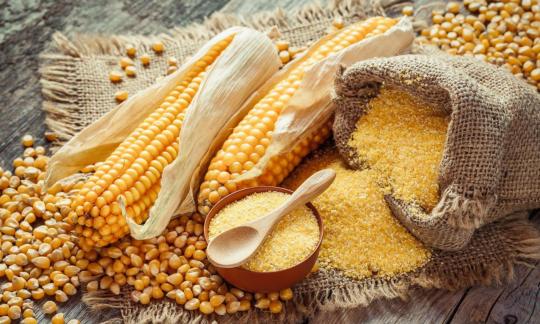

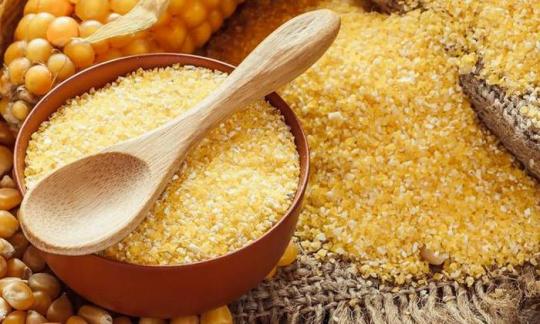

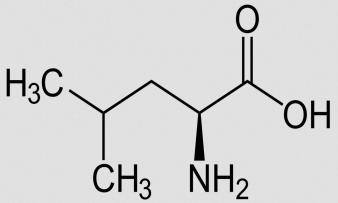
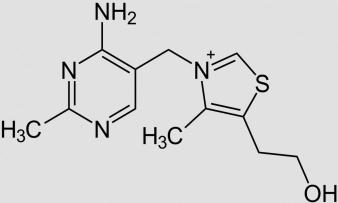
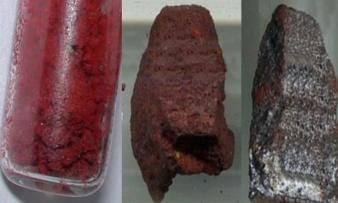


Comments